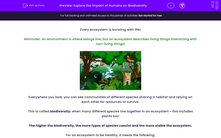Every ecosystem is bursting with life!
Reminder: An environment is where beings live, but an ecosystem describes living things interacting with non-living things!
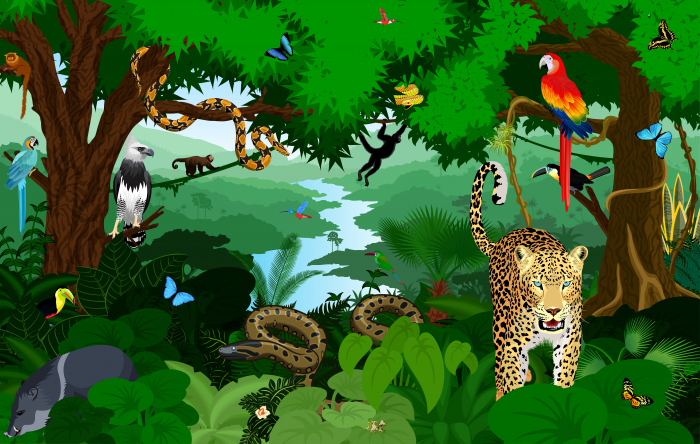
Everywhere you look, you can see communities of different species sharing a habitat and relying on each other for resources to survive.
This is called biodiversity: when many different species live together in an ecosystem - this includes plants too!
The higher the biodiversity, the more types of species coexist and the more stable the ecosystem.
For an ecosystem to be healthy, it needs the following:
FOOD + SHELTER + A HEALTHY AND SAFE PHYSICAL ENVIRONMENT = A STABLE ECOSYSTEM
As the Earth is one large ecosystem, this applies to us too, meaning that human survival depends on protecting our environment so that it stays stable!
So let’s put all these pieces together:

The smallest change to one creature can affect everyone, like in a food chain, so preserving nature should be a key responsibility for humans.
But, while environmental awareness is increasing, humans have already damaged the world in three major ways:
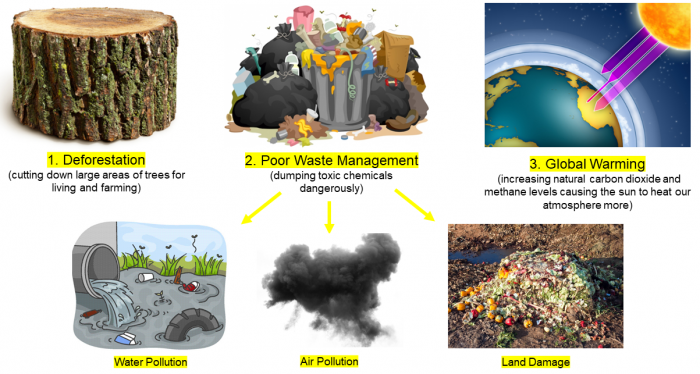
Deforestation provides land for farming and housing, but fewer trees means fewer habitats and less carbon dioxide gas being absorbed from the atmosphere, destabilising the planet.
Next, increasing population is challenging biodiversity, as more people means more waste, and unfortunately, humans are not very good at managing their rubbish!
Sewage and fertilisers have contaminated our water, toxic gases and smoke are causing air pollution and landfills are damaging land, along with toxic chemicals.
And the one we’re all feeling - global warming! More carbon dioxide and methane in the atmosphere is heating the planet through the greenhouse effect. The hotter the planet gets, the more biodiversity suffers - just think about the polar bears!
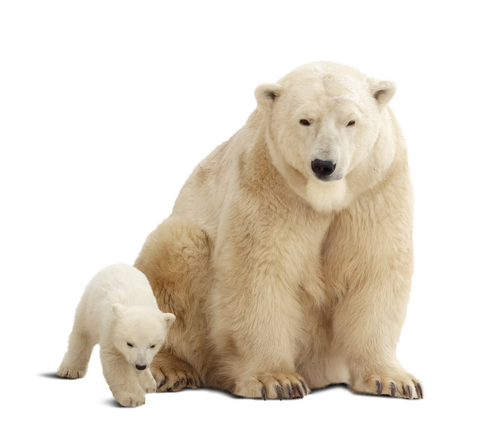
We are getting better at helping the planet, but money, the rearrangement and potential loss of jobs, and the increasing population needing to be housed, are all barriers to global improvement.
So in summary:
COSTS + UNEMPLOYMENT + DEVELOPMENTS = BARRIERS TO CHANGE
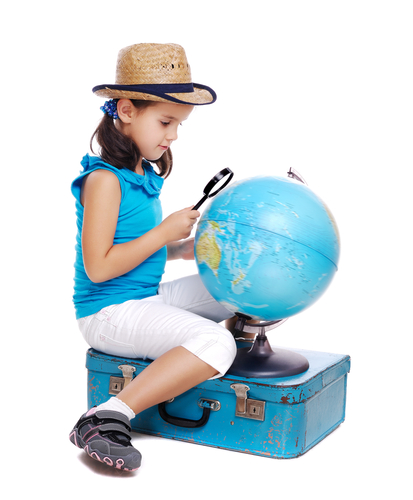
It is not all bad news though, as ecotourism has been successful in helping to restabilise ecosystems by minimising the effect of tourists on biodiversity.
The big bonus is that it’s sustainable, meaning it can replace resources as fast as it uses them!
Ecotourism involves reducing exploitation, and strives to make any future developments useful for local residents as well as tourists.
Now let's have a go at answering some questions on biodiversity!

